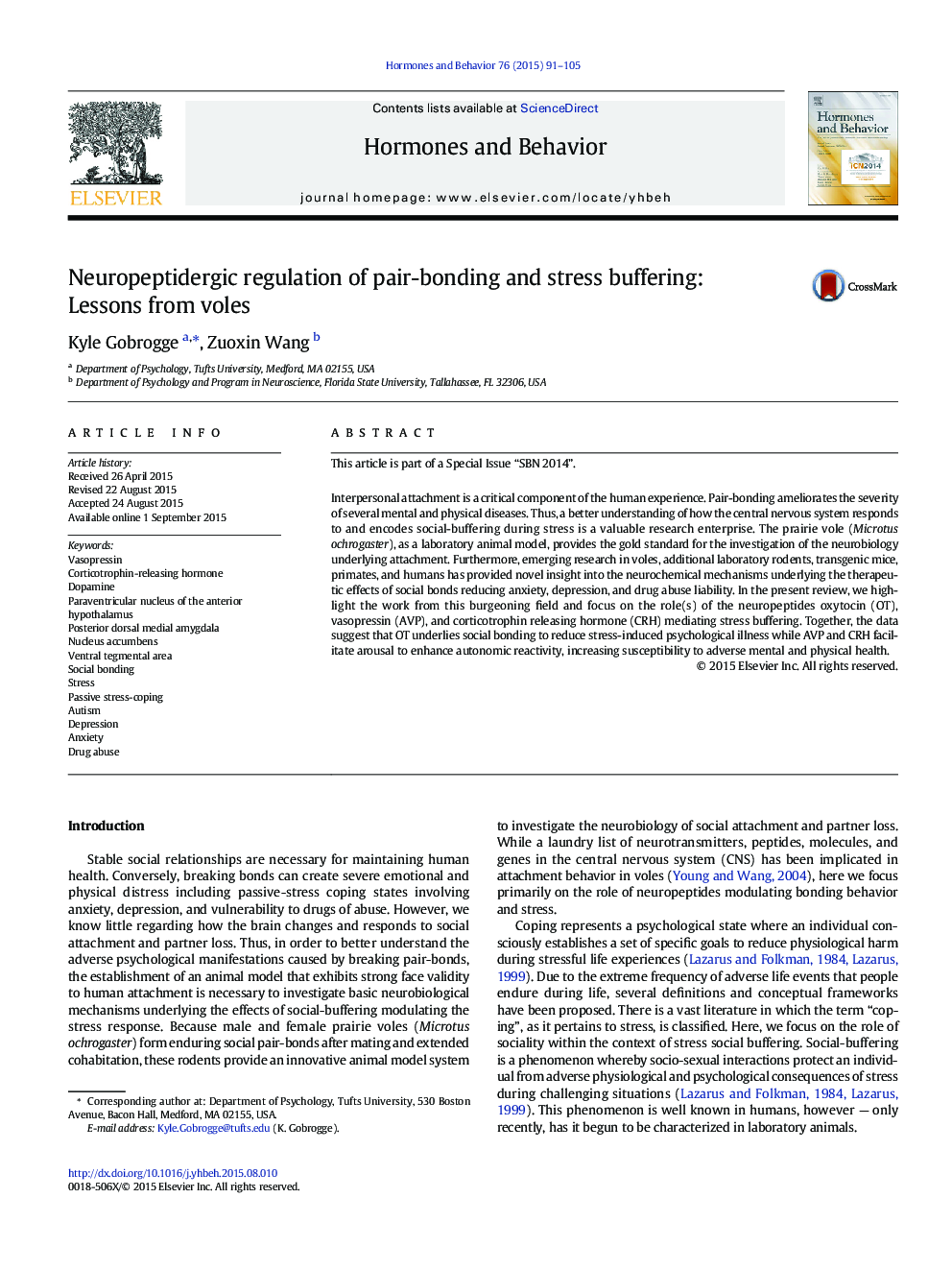| Article ID | Journal | Published Year | Pages | File Type |
|---|---|---|---|---|
| 323512 | Hormones and Behavior | 2015 | 15 Pages |
•Pair-bonding buffers stress via extra-hypothalamic neuropeptide systems.•Neuropeptidergic interactions modulate stress-mediated pathology.•Attachment and neuropeptides serve as viable biomedical therapies for stress.
This article is part of a Special Issue “SBN 2014”.Interpersonal attachment is a critical component of the human experience. Pair-bonding ameliorates the severity of several mental and physical diseases. Thus, a better understanding of how the central nervous system responds to and encodes social-buffering during stress is a valuable research enterprise. The prairie vole (Microtus ochrogaster), as a laboratory animal model, provides the gold standard for the investigation of the neurobiology underlying attachment. Furthermore, emerging research in voles, additional laboratory rodents, transgenic mice, primates, and humans has provided novel insight into the neurochemical mechanisms underlying the therapeutic effects of social bonds reducing anxiety, depression, and drug abuse liability. In the present review, we highlight the work from this burgeoning field and focus on the role(s) of the neuropeptides oxytocin (OT), vasopressin (AVP), and corticotrophin releasing hormone (CRH) mediating stress buffering. Together, the data suggest that OT underlies social bonding to reduce stress-induced psychological illness while AVP and CRH facilitate arousal to enhance autonomic reactivity, increasing susceptibility to adverse mental and physical health.
Graphical abstractFigure optionsDownload full-size imageDownload high-quality image (317 K)Download as PowerPoint slide
